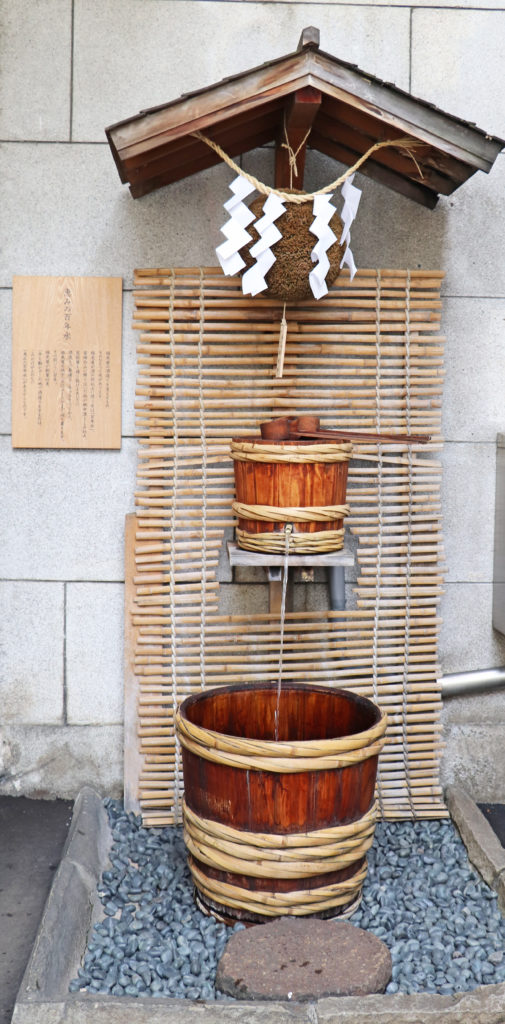
Kanazawa: 03.24.2018 – Day 7
Happy Saturday! 🙂
Woke up latest ever, 7:00AM! Starting to get adjusted to the time difference!
We got ready for the day and started heading towards the Omi-Cho Fish Market. We stopped at Starbucks for breakfast, picked up some coffee and food. After, we explored the Omi-Cho market and saw different foods and items compared to Tokyo’s market; sea urchin and huge crabs were very popular.
After walking around for about an hour, we started searching for the recommended Yamashan Sushi Honten Restaurant and waited in line for a little bit to get in.
We ordered the Sushi Bowl that the ramen chef recommended from last night. The rice was sweet and delicious. The fish over the rice marinated it as well; it was very savory.
After lunch, we traveled to the castle, a 25 minute walk. We took a bunch of pictures at the castle and enjoyed the history and architecture. We strolled and explored the grounds of the castle for a couple hours. Ended up stopping at the “rest house” for an hour or so to enjoy the scenery with some tea and snacks.


Once we explored the entire castle grounds, we started heading to the Sake Brewery (Fukumitsuya); this was about a 30 minute walk from the castle.
David’s Version: The guided tour started with a short film with English subtitles. This film went over a historical summary of how the brewery started and the process for making Sake. At the completion of the short film, we then proceeded to the guided tour. The tour showed every step of the brewing process (included taste samples of each stage).
Side Bar: Each Sake brewery in Japan has a Cedar Ball called a “Sugidama” hanging from the entrance. A sugidama is the recognized symbol of a Japanese sake brewery. The sugidama is originally put outside the brewery when the first sake is brewed for the season and the green leaves eventually turn brown overtime.

First – Koji Making – this is just rice, no liquid, and is the main ingredient in sake. We were able to smell and taste this step. The flavor was a lot sweeter then we anticipated.
Second – Moto – In order to make the final form of Moto, it takes about 15 days. We were able to taste Moto at 5 and 14 days. At 5 days, it was about 5% alcohol and sour. At 14 days, it was about 10% alcohol and even more sour (which was hard to believe).

Third – Moromi – During this step, we traveled to another room and saw brewing of Moromi. This was an adventure because we had to climb a ladder onto the top of the fermentation canisters. Once we arrived at the top, the ceilings were so low that we had to duck to get to the appropriate canister. To give a visual, the air duct work was impacting our head space due to how high we were in the room. At the top, we sampled the product at 22 days, it tasted like delicious Sake just less alcohol. For reference, this particular type of Sake would be complete at 25 days but others styles of Sake can go as long as 40 days.
Fourth – Pressing – We went to the pressing room where they remove the particulates, called “Sake Lees”. We were able to sample the Sake Lees and it had the texture of GUM. I didn’t like the flavor personally but someone in our group loved the flavor.
Finally – Pasteurized – We did not see this process, but the last process of sake brewing is when the Sake is pasteurized. However, we did get to taste unpasteurized Sake, the same style as the one we had of Moromi. There was a distinct difference between the pasteurized and unpasteurized version.
Side Bar: There are two interesting facts about this particular brewery:
- First – this place only makes Junmai Sake (pure rice with no extra things like added distilled alcohol)
- Second – there are approximately 1,000 Sake breweries in Japan; Fuku is number 36 in manufacturing quantity.
After the tour was finished, the group sampled three different Sake variations (types to come) and we purchased unpasteurized Sake to drink over the next couple days.
During the tour, we met a family from Pennsylvania, a mom (Maureen), dad (Kevin), and daughter (Gabby). The daughter is currently living in Japan teaching English as a second language. Gabby and her family were great company during the tour and also helped us get back to our hotel by teaching us how to use a Bus in Japan. Gabby gave us a restaurant recommendation which we decided to go to after her emphasis on the delicious soba noodles. Once we got to the hotel, we dropped off the purchased Sake and then headed to the restaurant via taxi. This was the first taxi we took in Japan. Fun facts, the taxi drivers can open and close the back passenger doors with a click of a button while they stay seated in the driver’s seat. Additionally, the taxi had a real TV (not like in the U.S. where its pre-programmed broadcasts) in the front by the driver. The Soba Noodle place was called Sarashina Fujii.
We ordered:
Kakiage tempura soba – Soba with mixed tempura (shrimp & vegtables)
Kamo Nanban – Soba with duct meat
Once we were done with dinner, we took another taxi back to the hotel and decided to get dessert Mochi for our last night Kanazawa.
Mochi Flavors:
Green Tea Tiramisu
Sakura
Double Chocolate
Marron
We took the dessert (Mochi) to go and went back to the hotel to have Mochi and Sake while watching Age of Adeline (GREAT MOVIE!).
Another successful day! Till tomorrow…









